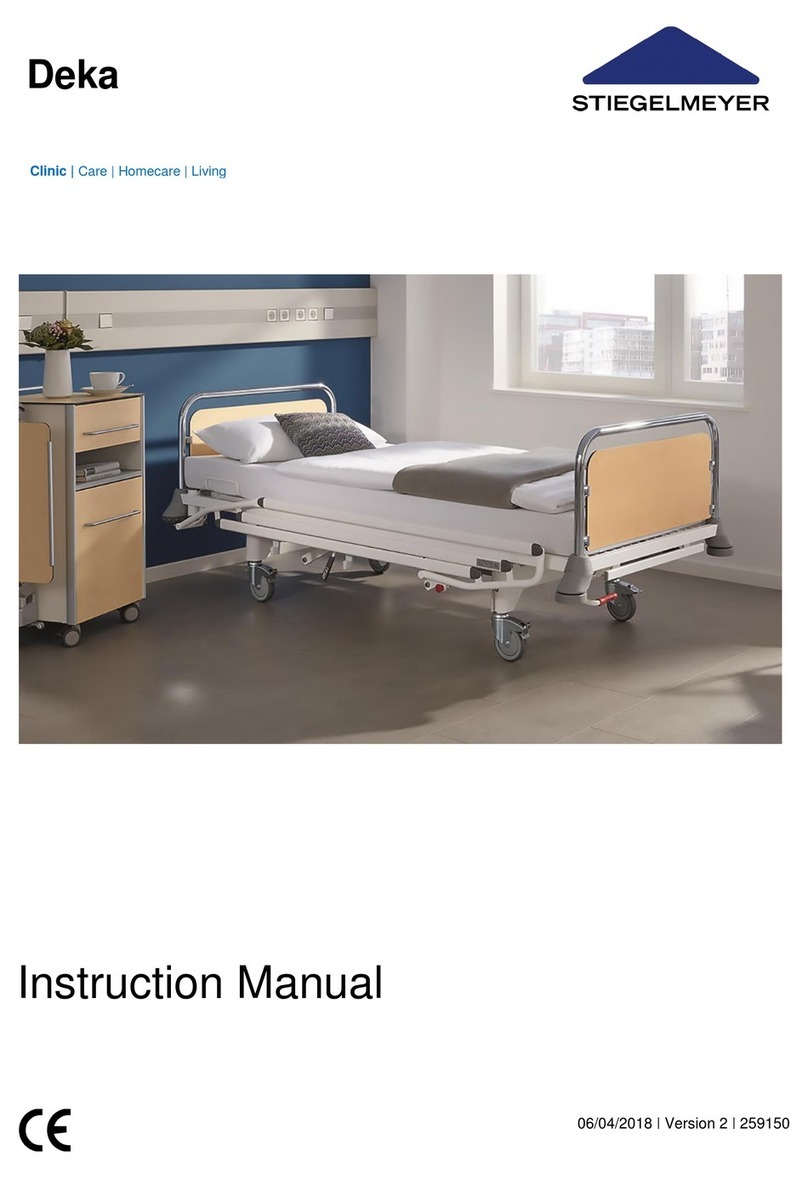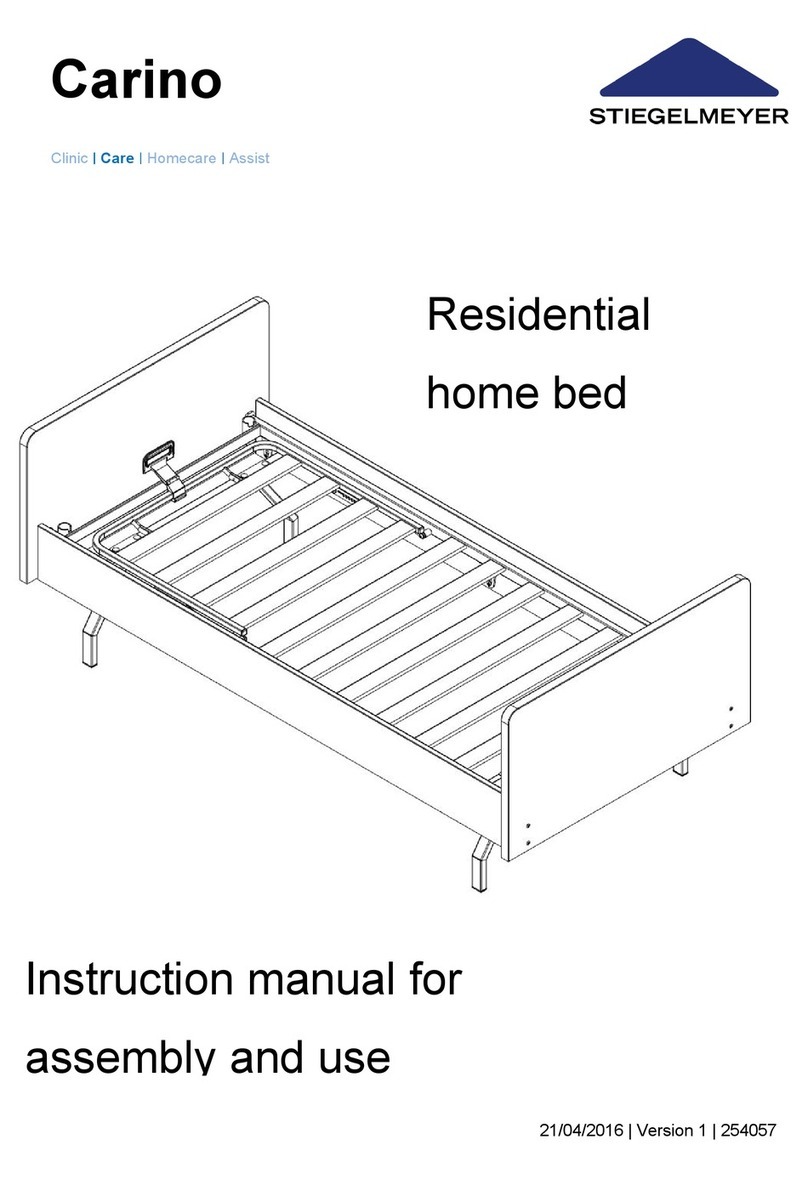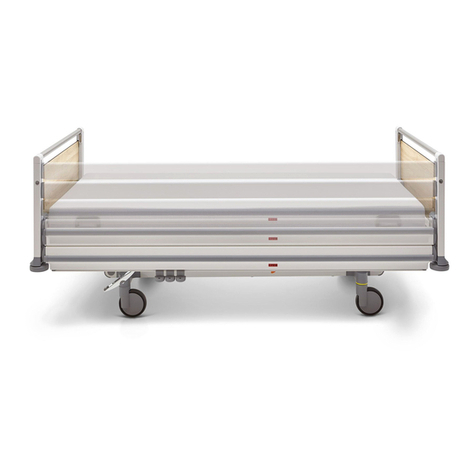
Instruction Manual for Sicuro pesa Hospital Bed
Page 3
Contents
1FOREWORD.................................................................................................................. 5
2GENERAL INFORMATION ............................................................................................ 6
2.1 Definition of the Groups of Persons Involved...................................................... 7
2.2 Safety Information................................................................................................... 8
2.2.1 Explanation of the Safety Symbols Used .................................................. 8
2.2.2 Safety Information for the Operator ......................................................... 9
2.2.3 Safety Information for the User .................................................................. 9
2.3 Product Description .............................................................................................. 12
2.3.1 Intended Use: ............................................................................................. 12
2.3.2 Designated Use .......................................................................................... 12
2.3.3 Contraindications ...................................................................................... 13
2.3.4 Side Effects.................................................................................................. 13
2.3.5 Special Features......................................................................................... 14
2.3.6 Materials Used ............................................................................................ 14
2.3.7 Structural Design ........................................................................................ 15
3PUTTING INTO SERVICE ............................................................................................. 16
3.1 Checklist: Inspection by the User........................................................................ 17
3.2 Location Requirements ........................................................................................ 18
4OPERATION................................................................................................................ 19
4.1 Moving and Braking The Bed .............................................................................. 19
4.2 Electrical Drive System.......................................................................................... 20
4.2.1 Special Safety Information on the Electrical Drive System.................. 20
4.2.2 Specifications for the use of Additional Electromedical Equipment. 22
4.2.3 Handset ....................................................................................................... 23
4.2.4 Control Box.................................................................................................. 25
4.2.4.1 Battery Charge Indicator ...................................................................................28
4.2.4.2 Positioning / Removing the Control Box...........................................................28
4.2.4.3 Enabling/Locking/Actuating Adjustment Functions......................................28
4.2.4.4 Enabling the Foot Pedal (Optional Feature)...................................................29
4.2.4.5 Trendelenburg and Reverse-Trendelenburg Positions ...............................29
4.2.4.6 Lateral Tilting (Optional Feature)......................................................................30
4.2.4.7 Shock Position (Trendelenburg Position) .........................................................31
4.2.4.8 CPR .........................................................................................................................31
4.2.4.9 Restricting the Maximum Mattress Base Height..............................................32
4.2.4.10 Sitting Position .....................................................................................................33
4.2.4.11 Normal Position ....................................................................................................33
4.2.4.12 Overwriting the Factory Default Settings .........................................................33
4.2.5 Battery Operation...................................................................................... 34
4.3 Manual Adjustments ............................................................................................. 35
4.3.1 Safety Information ..................................................................................... 35
4.3.2 Quick Adjustment of the Backrest .......................................................... 36
4.3.3 Quick Adjustment of Lower Leg Rest ..................................................... 37
4.3.4 Linen Holder................................................................................................ 38
4.3.5 Extending the Mattress Base .................................................................... 38
4.4 Attachments .......................................................................................................... 40
4.4.1 Location Sleeves for Patient Lifting Pole / Infusion Stands................... 40
4.4.2 Grab Handle (Triangular Handle)............................................................ 41









































